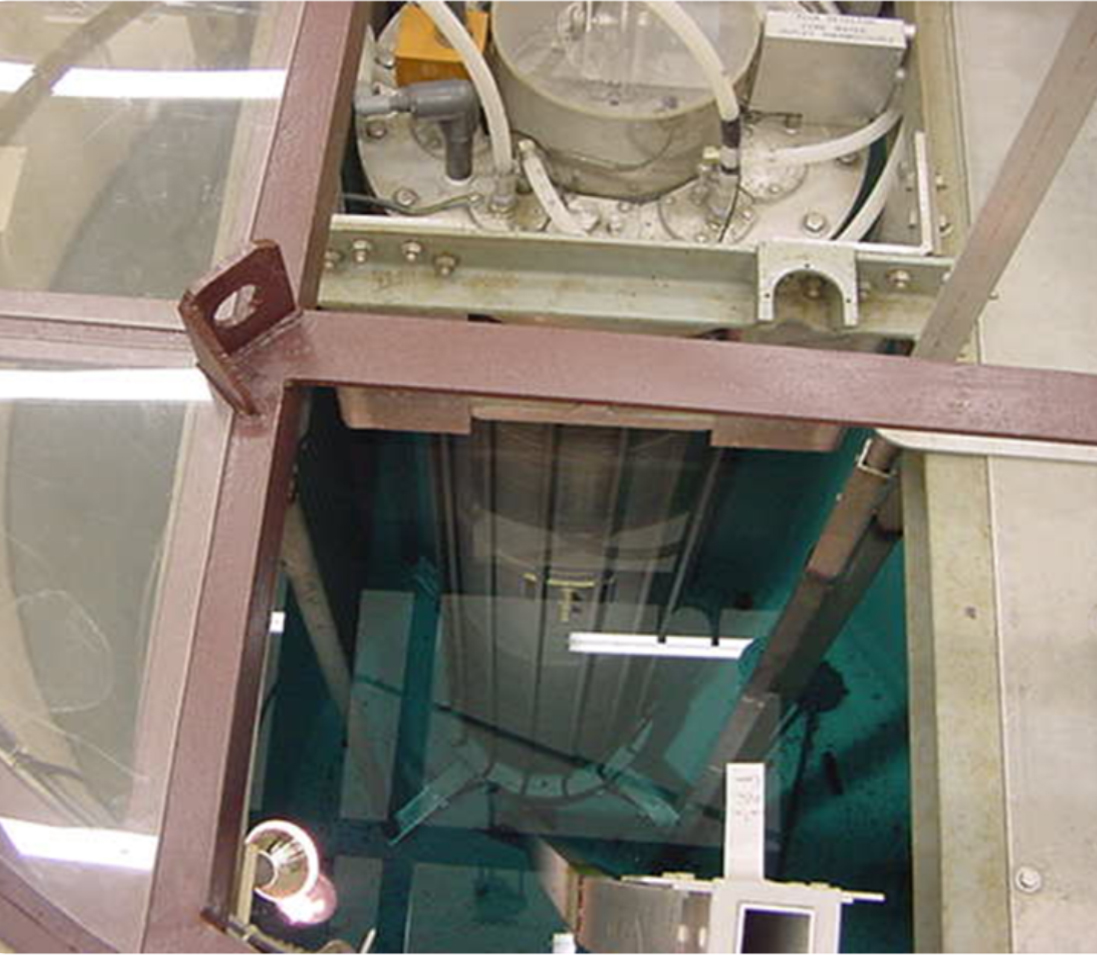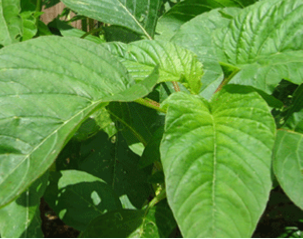
Neutron Activation Analysis (NAA) is a nuclear analytical technique used to determine the concentration of major, minor and trace elements in a variety of sample types. NAA is quite sensitive and is used for both multi-element qualitative and quantitative analysis.


Figure 1. An idealized illustration of the Radiative capture and emission of gamma rays and the Slowpoke 2 Reactor
 There are several suitable sources of neutrons that can be used for NAA.
There are several suitable sources of neutrons that can be used for NAA.
At ICENS the SLOWPOKE-2 Reactor, seen above, is the source of neutrons used for neutron activation analysis.
The neutrons are produced by the fission of 235U atoms in the reactor fuel. Radiative capture takes place when the samples are introduced into the reactor core and are bombarded by neutrons liberated during the fission process
The second phase of the technique is concerned with the measurement of an irradiated sample.
As shown in Figure 1, after a neutron interacts with a stable nucleus the compound nucleus that is subsequently formed decays almost immediately releasing prompt gamma rays. The radioactive nucleus that results also decays releasing charged particles and delayed gamma rays. These radioactive emissions and decay paths are characteristic of each element. With this knowledge and a gamma spectroscopy system it is possible to determine the concentrations of elements present in the sample.
Neutron Activation Analysis has several advantages that make it a useful technique for a range of sample analyses and applications

The wide range of sample types that can be analyzed by NAA makes this a technique that has many useful applications. The following are just a select few.
Epidemiology/ Trace element analysis of Animal and Human tissue - NAA can analyze samples such as hair, nails, blood and urine for essential and toxic elements. These results can aid medical science in investigating the role of these elements in the progress of disease and their control.
At ICENS, NAA has been used in the analysis of autopsy tissue such as kidney and liver to investigate the presence and potential effect of cadmium in the human body.
Reference Technique - Because of the high level of sensitivity and accuracy NAA frequently plays a role in the development of reference materials and methods and can also be used to validate other techniques and methods of elemental analysis.
ICENS has used this technique to help develop in-house reference materials, participate in inter-laboratory proficiency tests and to validate international reference materials.
Environmental Geochemistry - The chemical content of soils, rocks and sediments have implications for ecological and human health.


.Monitoring of Particulate matter and other air pollution sources - NAA can be used to analyze the elemental content of matter deposited on filters and the health implications of what we inhale.
Heavy Metal Pollution in Mining Areas - NAA can be used to assess the levels of heavy metals that have been added to the environment through mining activities and its effects on the existing residents and ventures as well as future land use.
Forensics - The excellent sensitivity of detection of NAA make it very useful in analyzing the small samples that present themselves in some criminal cases such as gunshot residue, hair and glass.
Elements present in the soil are taken up by plants, many of which are consumed as food. Analysis of these crops and the soils they grow in by NAA can be used to determine the fertility of the soil, the essential and toxic elemental content of the foods and the uptake dynamics between soil and plant.



Ackee, yam and callaloo– among the many foods analyzed by NAA at ICENS
With its wide array of applications and ability to analyze several sample types, neutron activation analysis continues to be a relevant technique in the analytical field. Despite the emergence of newer techniques, the excellent detection limits and the high level of accuracy associated with NAA continue to keep this technique at the forefront of quantitative and qualitative multi-element analysis of major, minor and trace elements.
No